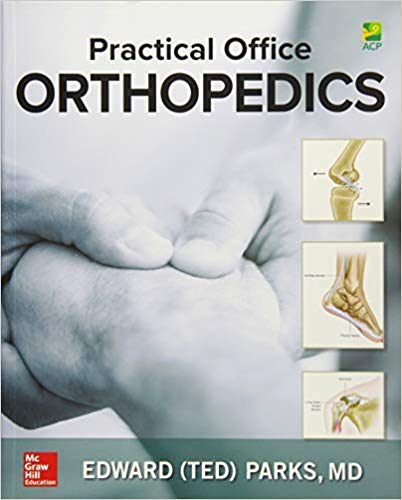There are very few good orthopedics books that are suitable for the non-orthopedist audience, and I think I know why. Generalists often lack the specialized knowledge that orthopedists have, while orthopedists tend to see more extreme versions of musculoskeletal conditions—a problem known as spectrum bias—so their recommendations often seem overly aggressive to generalist readers. This often results in orthopedics books that are either insufficiently erudite (when written by generalists) or are overly aggressive in terms of workup and management (when written by orthopedists).
Practical Office Orthopedics (2017), on the other hand, is one of the rare exceptions. The material is presented in a straightforward manner with the generalist, particularly medical students and residents, in mind. Yet more invasive treatments are presented as options for more extreme cases.

Take, for example, thumb-base osteoarthritis. The discussion starts off with a vivid and lively outline of the relevant pathophysiology:
The joint at the base of the thumb pivots in almost every direction. The muscle forces are greater here, too. Look at the palm of your hand. That big wad of muscle on the thumb side … allows the thumb to exert high forces in many different positions. With all of this force and motion occurring here, it is no wonder that this joint wears out more frequently than all the joints around it.
Practical Office Orthopedics (2017), page 131
The management recommendations are conservative to begin with (thumb spica splint and physical therapy) and only after that proceed to more invasive options (cortisone injections and surgery).
There is also a full chapter on steroid injections. While, like the rest of the book, it is very well written, I’m having a bit of a hard time getting excited about it in its current form. Evidence of benefit for these interventions is ambiguous at best in many areas, and evidence for harm is continuing to mount. As the author himself writes:
It is generally accepted that [glucocorticoid] injections should be used judiciously. The specifics on this are somewhat vague…. The medical evidence supporting these guidelines remains elusive…. What is even less clear is how many injections total a person can have (in any particular joint) in their lifetime.”
Practical Office Orthopedics (2017), page 232
Considering all these qualifications and caveats, it’s not clear to me how the author’s exhortation that “If you are not using cortisone injection as a part of your treatment strategy for common orthopedic conditions, I strongly urge you to start” (Id., with emphasis supplied) is justified.
So what’s an author to do? Perhaps in future editions of the book glucocorticoid injections should be discussed only after a chapter-length discussion of other analgesia strategies, most notably acetaminophen, topical nonsteroidals, gabapentin and perhaps even short-term opioids in more severe injuries. This would help make it clearer that more invasive techniques should be considered only after the less invasive methods have been acted upon, or at least thought through and discussed with the patient.
That said, I highly recommend Practical Office Orthopedics (2017) to anyone who practices outpatient medicine. It is, in my view, the best general purpose orthopedics books since Physical Examination of the Spine and Extremities was published more than 40 years ago. In fact Practical Office Orthopedics (2017) could be considered a companion book to Physical Examination of the Spine and Extremities (1976), which is a diagnosis only book.


Leave a Reply